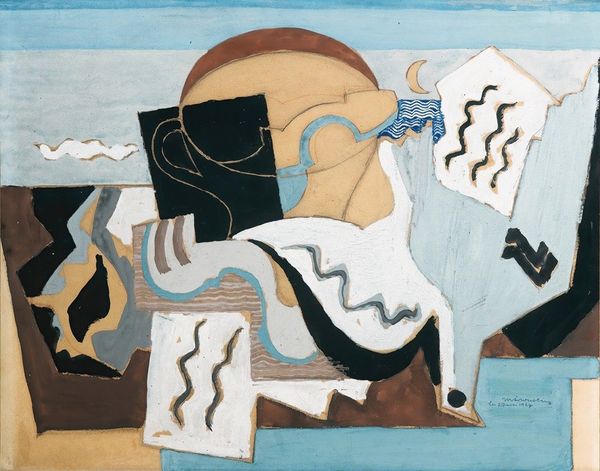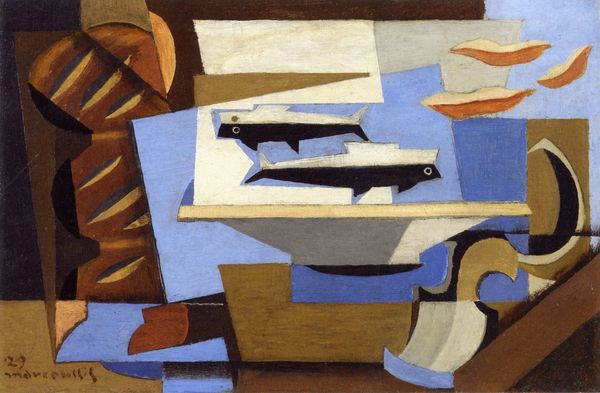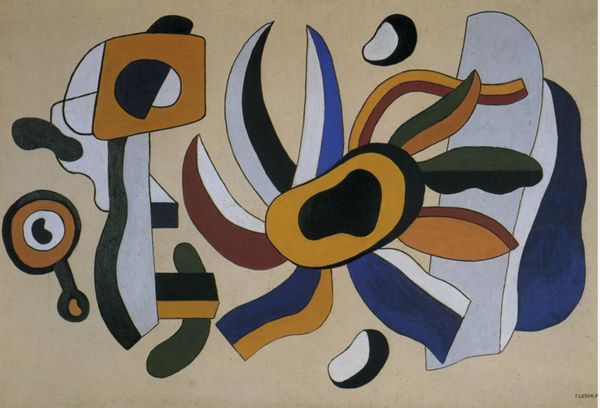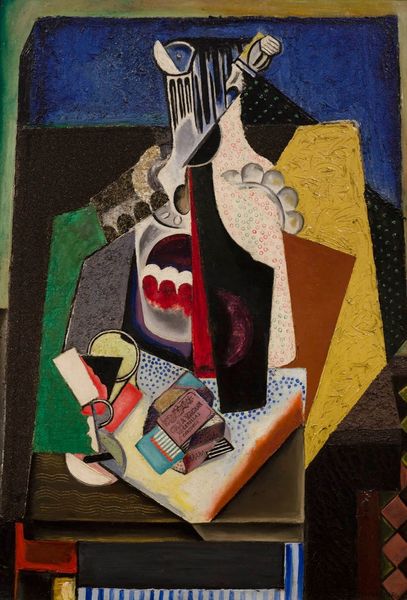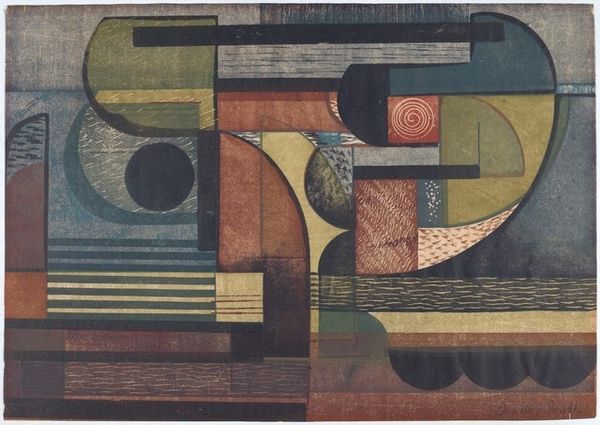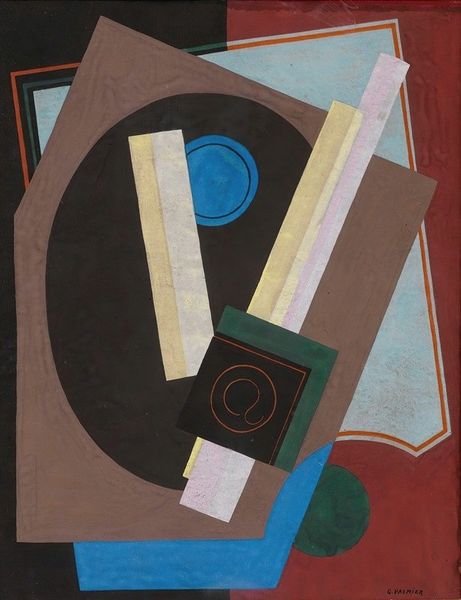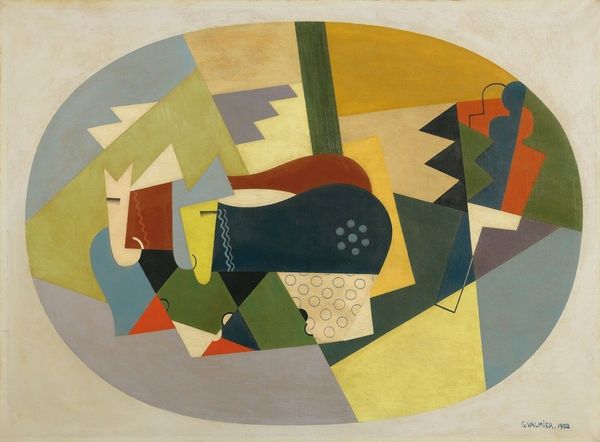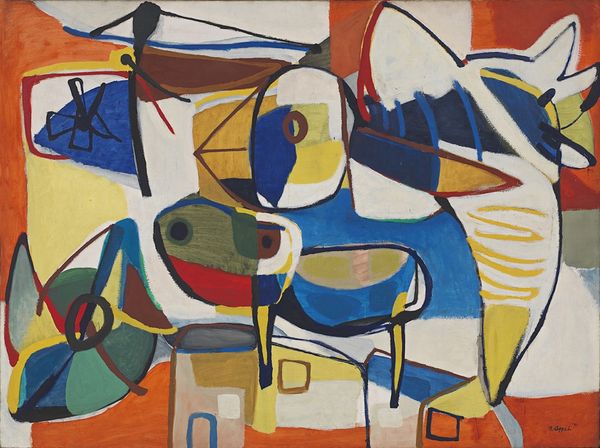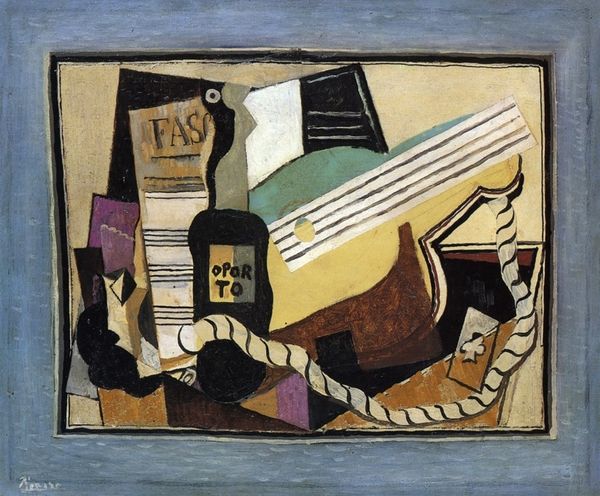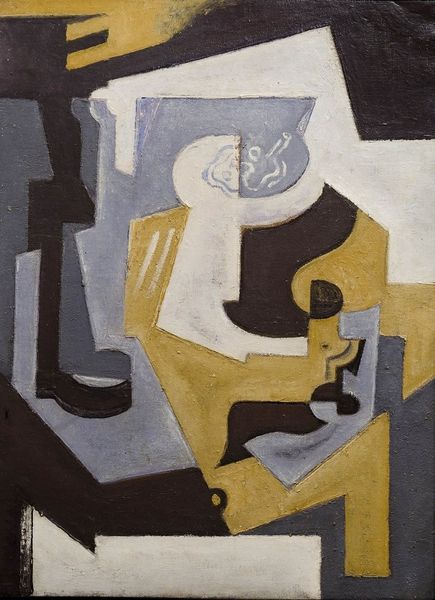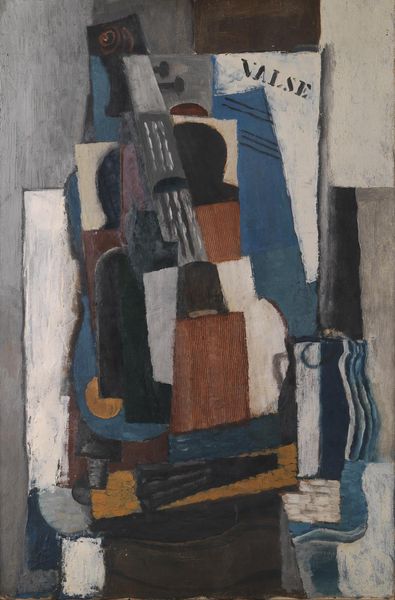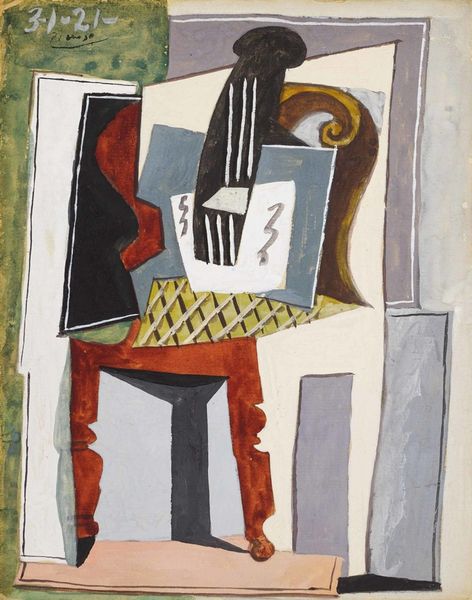
oil-paint
#
art-deco
#
cubism
#
oil-paint
#
oil painting
Copyright: Public domain
Editor: Here we have "La Cithare," an oil painting from 1923 by Louis Marcoussis. It strikes me as quite a playful arrangement of shapes and textures, almost like a flattened collage. What do you see in this piece? Curator: I find it fascinating how Marcoussis uses oil paint to mimic the appearance of various materials. Look at how the wood grain is rendered, then compare it to the bottle’s texture. He’s not just depicting objects, he’s evoking the tactile experience of engaging with these everyday items and hinting at their origins, such as in timber mills, glass blowing, even vineyards. The “Cithare”, or zither, is broken into its constituent parts like items displayed in a factory before construction. Editor: So, it's less about the final image and more about the components and the process of creating music and, well, creating art itself? Curator: Precisely! Consider the socio-economic context. This was painted in the aftermath of World War I, during an era of mass production. Cubism lent itself beautifully to analyzing forms – and materials – on an elemental level. It invites the viewer to question not just what art *is* but *how* it’s made, who makes it, and what the materials contribute. The musical instrument almost appears like parts ready to be assembled on a production line. Editor: That makes a lot of sense. It's like he's revealing the underlying structure of both the artwork and the world around him. Curator: Exactly. The painting encourages us to engage with the materiality of everyday objects and understand them as a reflection of labor and production. It really brings attention to the relationship between artistic practice, the materials used, and broader social forces. Editor: I hadn't thought about it that way before, but now I see so many new layers in the work. Curator: It’s about the relationship to things that carry raw matter and labor embedded in them. Appreciating that will always be part of the equation.
Comments
No comments
Be the first to comment and join the conversation on the ultimate creative platform.
